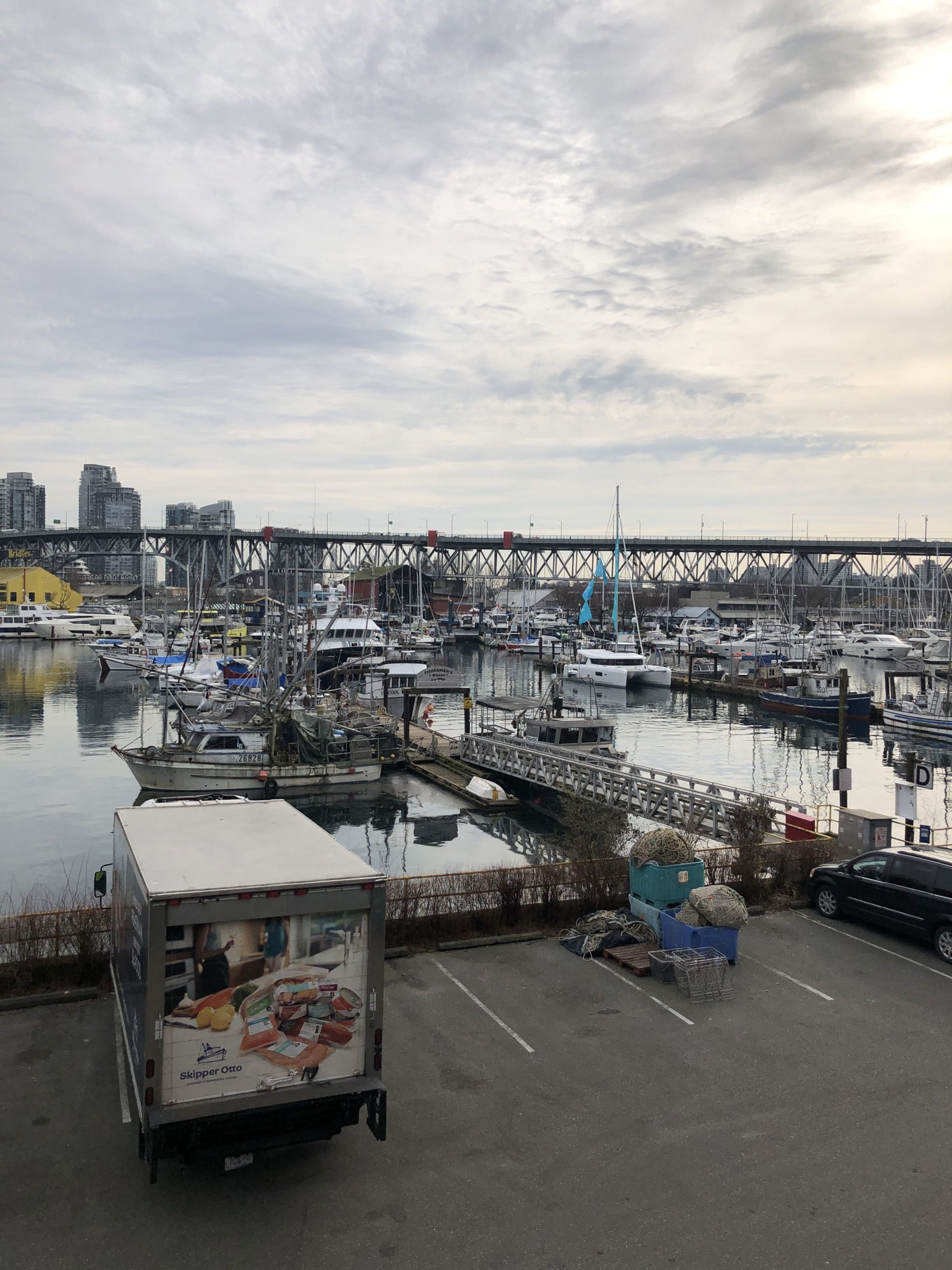I would like to acknowledge that Richmond is located on the traditional and unceded territory of the Musqueam people, and that I am a guest in this land. I am thankful for the Coast Salish as they have been stewards of this land since time immemorial and I am reminded of my responsibility to heal the past wrongs inflicted on them.
Today, we had a great day spending time in Steveston, Richmond, learning more about the village and the surrounding area. As someone who lives and works in Steveston, it was interesting to learn a little bit more about the village. We started off the morning in Gary Point Park and saw the Steveston Fisherman’s Memorial, which was unveiled in 1996. The monument was designed as a fishing net mending needle surrounded by a compass rose engraved with the names of the fishermen of the Steveston community who have lost their lives. It was sad to see all the different names engraved, but on the walls of the memorial was a bouquet of flowers for the fishers. This made me realize that although seafood is always available in the restaurants and supermarkets, the process of obtaining the seafood is a harsh and difficult process that we should be thankful for. We were blessed with the opportunity to see the cherry blossom trees in full bloom and I wondered why there were so many. There was a rock engraved with the information about the cherry tree garden, and it was planted for all the Japanese immigrants and ancestors, and for their accomplishments. As we were walking in the park, there was a man on top of a hill, playing melancholic music with a pan flute. It provided to a sad and somber mood, and we all agreed that there was something a bit sad with this park. This tied into the theme that Gary Point Park was a land that should be treated with respect with all the memorials on it. We tried to strike up a conversation with the man, but he would not stop playing his music, and we decided it would be best to let him be.
We met up with Amanda and Eric, and learned a little more about the fisheries. Eric mentioned that computers and the management have killed fisheries. Using new technology and having managers that do not live in the community having reduced the connection between fisheries. However, to me I feel that the world is moving forward, yet fisheries have stayed behind and they need to be able to keep up with the new methods. I know this is not always possible as there is a lack of research, effort, and management within the fisheries, but that is something that they need to be improved on. Something new that I learned from Eric is about the reduction fisheries. Reduction fisheries reduce fish into fertilizer, fish meal, or fish oil, and since the fish is reduced, it does not matter what you catch in the ocean. It was surprising for me to learn that BC closed the salmon fisheries, and that most of the “wild caught salmon” is from Alaska. I assumed that since the Fraser River, one of the most important salmon spawning rivers, was always used to catch salmon. Learning about the trawlers devasting Goose Island Bank was a full circle learning experience. I first learned about trawling in this class, and now learning about how it destroyed one of the best halibut spots in the world, near where we live, it made me realize that this isn’t something that just happens “far away,” and can happen anywhere, even locally. It was really sad to hear about the life of the Observer’s. They risk their life for their job if they were to be honest and truthful, and face a lot of sexism and racism. I wondered why people would still want to become an observer if there aren’t that many benefits for them?
When I visited the Gulf of Georgia Cannery, I assumed that all the machinery and conditions were “old technology” and “old news,” but I was shocked to hear that places around the world still use the same methods! What was even more shocking to me is that the cannery had been operational until 1979, which was approximately 40 years ago. That is pretty recent considering that it is within my parent’s life time. I don’t really think about life back in the 1900’s, but hearing how racist, sexist, and ageist the society was, it is scary to think about growing up in that environment. It makes me a bit worried about how my parents were forced to live in that environment when they were growing up and immigrated to Canada. It is crazy to me how not only has the land been stolen once from the First Nations, but again from the Japanese people. However, I think Richmond is trying to accommodate for their wrong doings in the past with the memorials and gardens in Gary Point Park, and with the education of this history at the Cannery and the Britannia Shipyards.
For future field trips to Steveston, I think it would be great to speak to one of the local fishers, maybe one of the fishers that sell spot prawns such as someone from Steveston Spot Prawns! It was also unfortunate that we could not visit the Britannia Shipyards due to filming, as that historic area is very interesting. I am glad to have taken this course, and that I was able to have the opportunity to learn so much! I am very thankful for Amanda, Roshni, and Tanvi for coordinating the course so well to keep us all connected and to maximize our interactions during this time. I am also grateful for the Guylian Chocolate’s and would love to eat more chocolate and support other sustainable causes at the same time!
